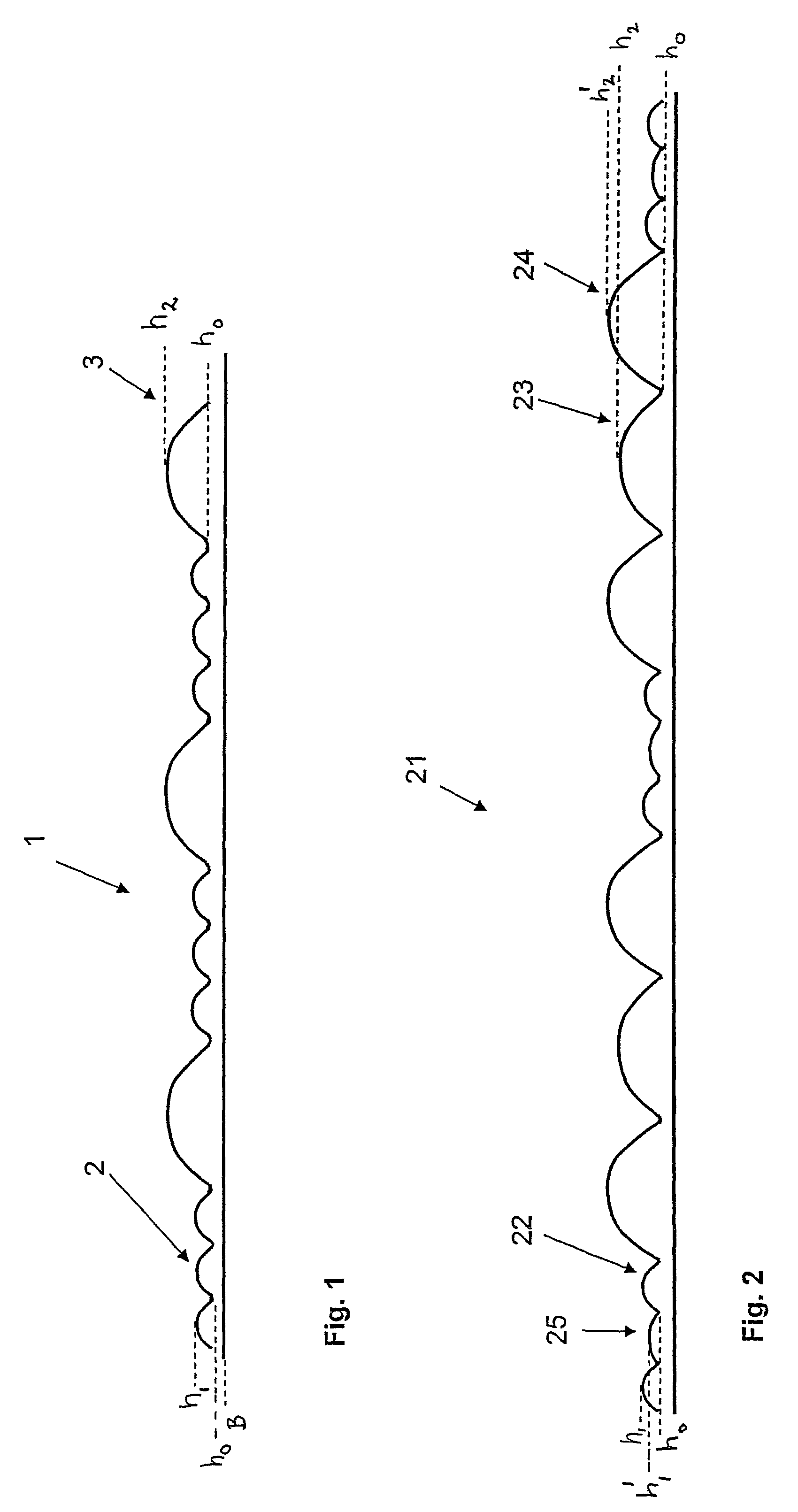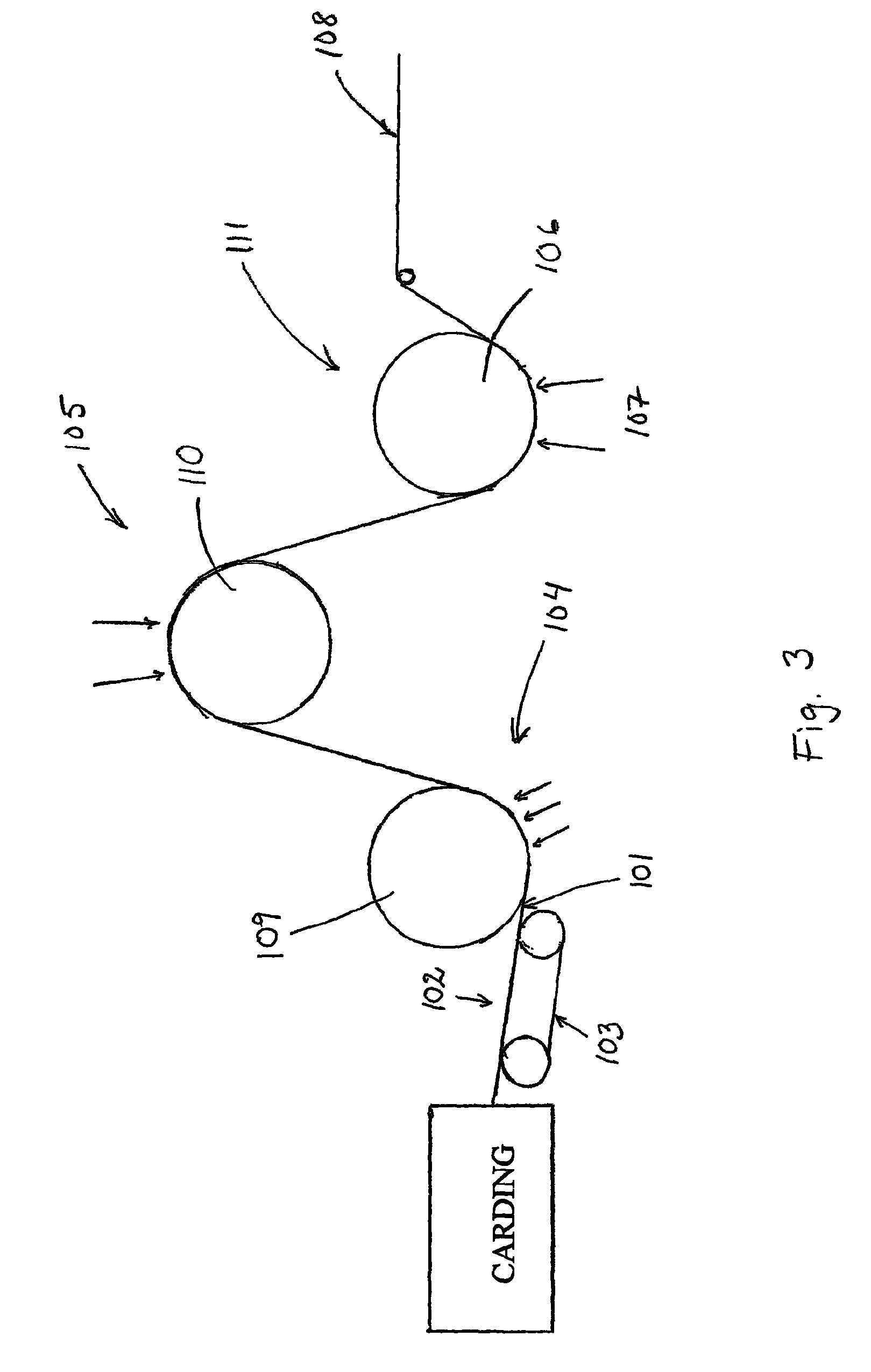Nonwoven material and absorbing article comprising nonwoven material
a nonwoven material and absorbent material technology, applied in the field of nonwoven materials, can solve the problems of reducing the softness of the surface, affecting the strength characteristics of the material, and less readily visible images, and achieves good liquid receiving characteristics, clear images, and comfort for wearers
- Summary
- Abstract
- Description
- Claims
- Application Information
AI Technical Summary
Benefits of technology
Problems solved by technology
Method used
Image
Examples
examples
[0085]There now follow a number of examples of nonwoven materials produced in accordance with the present invention. A substrate web is produced in the conventional way. The substrate web is then hydroentangled, wherein it is transferred to the carrier device in the form of a plate that is cylindrical in shape. The substrate web is hydroentangled with jets of water.
[0086]A number of different plates are used in production. Data for the background patterns of these plates are shown in Table 1. The area of individual holes in the background pattern has been measured. The individual holes can form part of an image, for example a flower. One example of a part of an image is illustrated below for a principal pattern in FIG. 5. If the background pattern contains a group of protuberances with different areas, which together constitute part of an image, for example a flower, these protuberances together constitute part of an image of a first surface structure that has been produced on a gro...
PUM
| Property | Measurement | Unit |
|---|---|---|
| height h2 | aaaaa | aaaaa |
| height h2 | aaaaa | aaaaa |
| area | aaaaa | aaaaa |
Abstract
Description
Claims
Application Information
 Login to View More
Login to View More - R&D
- Intellectual Property
- Life Sciences
- Materials
- Tech Scout
- Unparalleled Data Quality
- Higher Quality Content
- 60% Fewer Hallucinations
Browse by: Latest US Patents, China's latest patents, Technical Efficacy Thesaurus, Application Domain, Technology Topic, Popular Technical Reports.
© 2025 PatSnap. All rights reserved.Legal|Privacy policy|Modern Slavery Act Transparency Statement|Sitemap|About US| Contact US: help@patsnap.com



